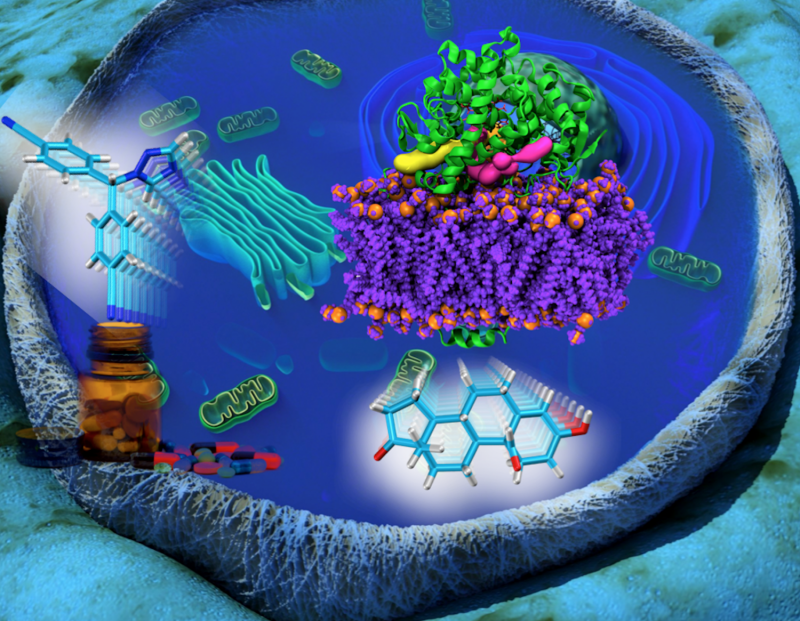Towards more effective therapies to fight breast cancer

Breast cancer is one of the most common cancers in women in Italy and in the world. Today, however, it seems possible to design more selective and effective drugs through numerical simulations.
A new study analyzed in detail the mechanisms activating an important pharmacological target involved in female hormone synthesis, exceeding the limits of experimental approaches. This research, funded by AIRC—the Italian Association for Cancer Research, has shown that molecules of different shapes and sizes follow the same pathways within the protein to access the active site i.e. the heart of the protein where female hormones are synthesized and has been published in the Journal of Physical Chemistry Letters.
"Cytochromes P450 are enzymes that play a key role in the metabolism of different hormones and drugs. In particular, they are important pharmacological targets for treating breast and prostate cancer" explains Alessandra Magistrato, CNR-IOM / SISSA researcher and first co-author of the work together with Jacopo Sgrignani of the Bellinzona Institute for Research in Biomedicine. "We have known for a long time that these enzymes are characterized by a hidden active site, which can be reached through several of grueling access channels whose real function is not yet known. We chose aromatase as a prototype of the cytochrome P450 family and compared the access paths of two molecules differing in shape, size and hydrophobicity – i.e. the tendency to interact with water".
Aromatase is an enzyme responsible for the synthesis of female sex hormones, whose excessive production is among the causes of breast cancer development. In the study, led by Alessandra Magistrato of CNR-IOM/SISSA and Andrea Cavalli of the Bellinzona Institute for Research in Biomedicine and carried out in collaboration with Rolf Krause of the University of Italian Switzerland, the researchers compared a last-generation anti breast cancer drug, an aromatase inhibitor, and a hormone on which the enzyme acts.
"Through classical molecular dynamics simulations, which allow us to study the evolution of the processes at an atomistic level, we were able to identify and characterize, from an energetic point of view, the preferential access paths of the two molecules to reach the enzyme catalytic site. Surprisingly we identified the same two channels in both cases, regardless of the different shape, size or hydrophobicity of the two molecules studied. Moreover, the similarity between different cytochromes P450 at the critical points suggests that this feature may be common to the entire enzymatic family".
"These are results which cannot be directly observed experimentally, but which are crucial for developing more selective and effective drugs", concludes the researcher. The study is in fact part of a "My First AIRC" project, that was financed to Alessandra Magistrato by AIRC—the Italian Association for Cancer Research for designing, synthesizing and testing new anticancer drugs to fight breast cancer.
More information: Alessandra Magistrato et al. Single or Multiple Access Channels to the CYP450s Active Site? An Answer from Free Energy Simulations of the Human Aromatase Enzyme, The Journal of Physical Chemistry Letters (2017). DOI: 10.1021/acs.jpclett.7b00697

















